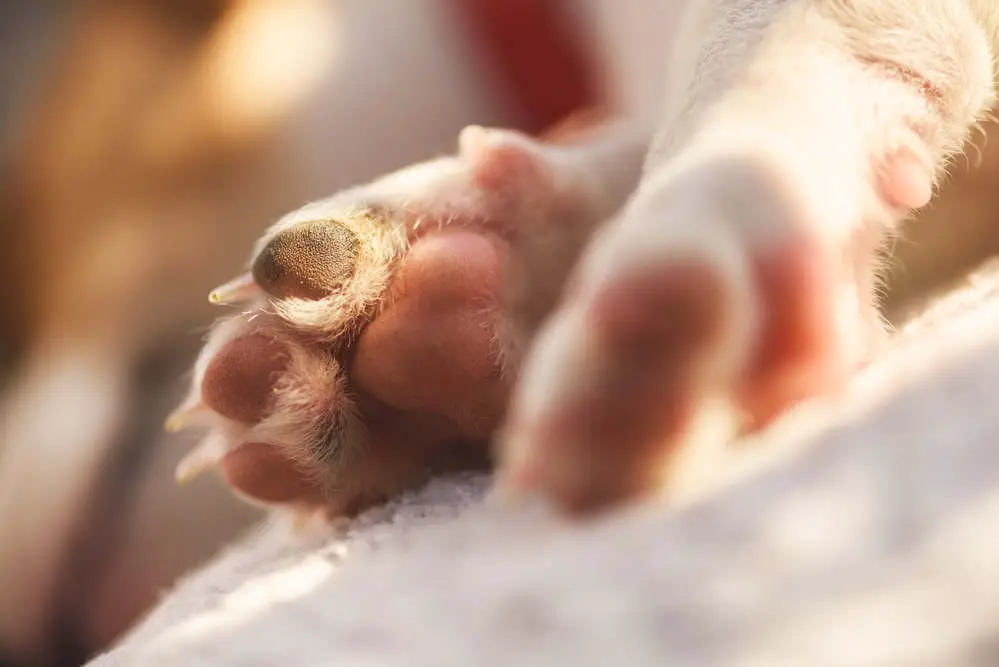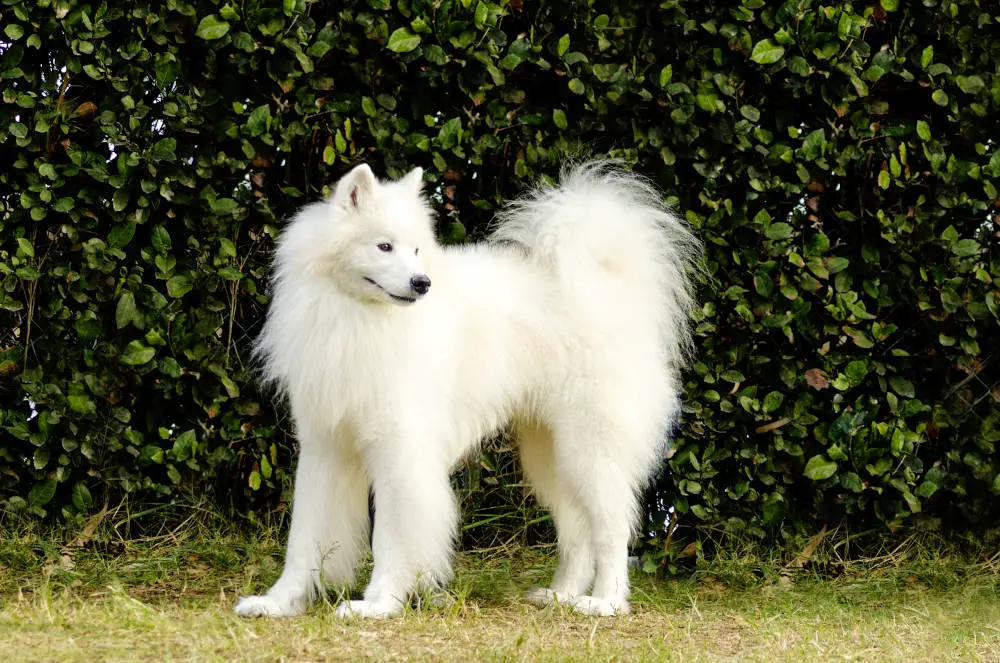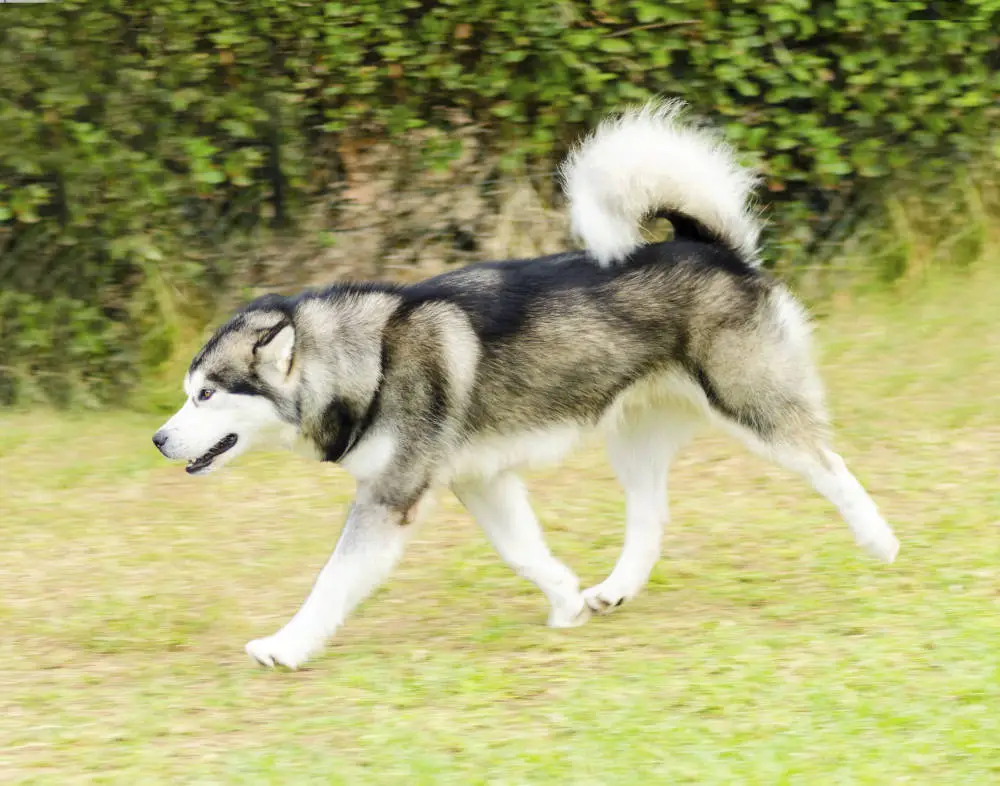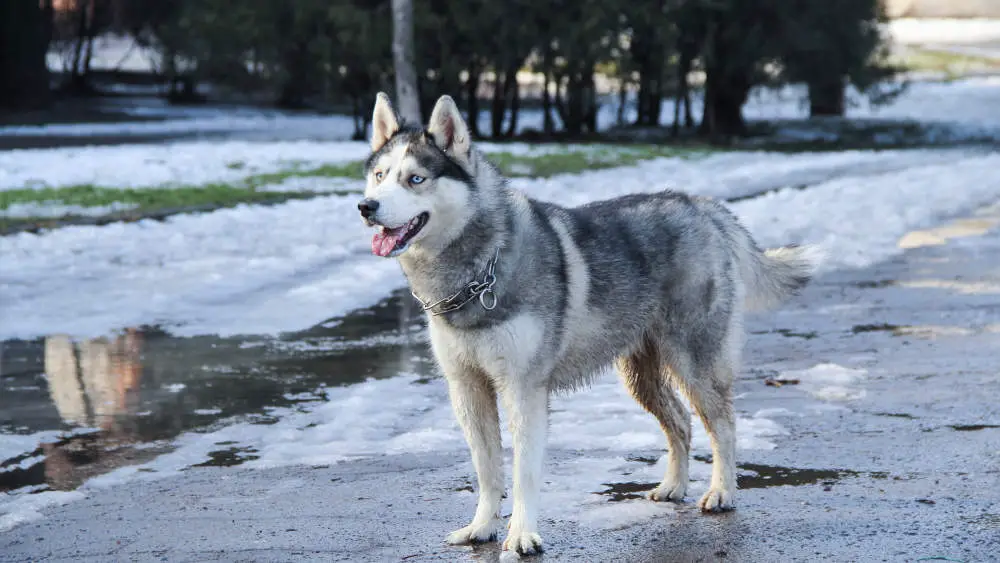
Most animals, including dogs have claws, which are made of keratin, a hard protein. In carnivorous mammals like dogs and cats, claws help them to catch their prey and hold them, while also having several other uses such as digging, self-defense, grooming, climbing, etc.
So, what type of claws do dogs have? Do dogs have retractable claws? Which dog breeds have retractable claws? Read on to know more…
What Type of Claws Do Dogs Have?
When you look at your dog’s paws and claws, you may simply think that dogs’ claws are just hard and flat pieces of keratin that help to protect the tips of their paws. However, your pet’s claws have plenty of other functions that just offer protection. Dogs are essentially digitigrade mammals with 4 feet, which essentially means that when they stand and walk, their toes touch the ground.
On examining your dog’s paws closely, you can see that he has 4 nails on each of the rear paws and 5 nails on the front paws. The extra nail located in the inner part of your pooch’s paw is known as the dewclaw, which refers to the tendency of the dewclaw to brush away dew from the grass when the dog walks on it.
The dewclaws are essentially vestigial parts that do not touch the ground when the dog is standing. Sometimes, dogs may have a dewclaw on the hind legs too; however, in most of the dog breeds, these rear dewclaws have small muscle or bone structures.
Some dog breeds have more than a single dewclaw on one paw and these dog breeds are known as double dew-clawed dogs.
Dewclaws, unlike retractable claws, cannot be extended when needed and often, pet owners keep these claws trimmed to a short, safe length. Dewclaws are generally ineffective appendages; however, they may sometimes be used by dogs to grip things such as bones, etc. that dogs hold using their paws. And, in some cases, the dewclaws also help dogs to maintain their balance.
It may seem that cats tend to use their claws a lot more compared to dogs such as for scratching, grabbing things, climbing, etc., while most of the dog breeds do not seem to use their claws and they are seemingly useless. This is mainly because cats have retractable claws, while retractable claws can be seen only in very few dog breeds.
What Are Retractable Claws?
Claws that are hidden away or sheathed in the normal state, wrapped around the toe pads and enclosed in the skin; however, when the paws are relaxed, the claws are exposed and drawn out.
These types of claws are known as retractable claws. Retractable claws ensure that the claws remain sharp and they don’t wear when they touch rough surfaces and the ground.
Retractable claws are mostly seen in cats and less commonly in dogs. Most of the dog breeds have protracted claws, which essentially means that active dogs that spend most of their time outdoors have short claws because they get worn down. Most dogs have blunt claws, which are not useful to them.
Dog Breeds with Retractable Claws
While retractable claws are not very commonly seen in dogs because they do not serve any purpose, however, some dog breeds have retractable claws. Typically, retractable claws are seen in sled dogs.
The retractable claws in these breeds help the dogs to move quickly across the snowy and icy landscapes that they are native to. Some of the dog breeds having retractable claws include:
Samoyed

Bred to haul sleds, hunt and herd reindeer, the Samoyed dog is native to northwestern Siberia and were valued companions for the people of the Samoyede tribe.
With a similar large build like the Siberian Huskies and Alaskan Malamutes, Samoyeds are distinguished by their thick all-white coats and always smiling faces.
These hard-working dogs are strong and sturdy, perfect to survive the extremely cold and icy conditions. Samoyeds have retractable claws and the genetic anatomy of their claws is similar to that of Siberian Huskies and Alaskan Malamutes.
The retractable claws of the Samoyed help them to move easily and quickly in the snow and also helps to hunt and defend themselves.
Alaskan Malamute

Among the oldest dog breeds of the Arctic, Alaskan Malamutes were used as sled dogs. Believed to be the descendants of domesticated wolf dogs, Alaskan Malamutes are spitz-type dogs that are very strong and hard workers.
These dogs have a heavy bone structure, powerful shoulders, deep chest and dense weatherproof coats are known for their fantastic strength and stamina to pull heavy carriages across the snow and ice.
Alaskan Malamutes have muscular and stocky legs that are built to withstand the harsh and icy weather conditions of the Arctic. They have paws that look like snowshoes and cat-like, retractable claws.
The main reason for their bear-like paws with snowshoes and retractable claws is that these help the Alaskan Malamutes to traverse the snowy landscapes easily and quickly and the retractable claws provide the Malamutes firmer grip on the soft snow.
Siberian Husky

Often mistaken for the Alaskan Malamute because of their physical similarities, Siberian Huskies are smaller, as well as lighter compared to their muscular and big-built cousins. This compact and medium-sized dog has excellent endurance and was developed to pull sleds and loads across the frozen and icy expanses of Siberia.
Belonging to the spitz family, Huskies typically work in packs and are characterized by their dense double coat with unique markings, triangular ears, piercing blue brown or multi-colored eyes. Siberian Huskies are one of the 3 dog breeds having retractable claws like cats, which enable them to move easily in the soft snow.
Advantages of Retractable Claws in Dogs
Animals like cats that have retractable claws use them pretty effectively to grab things, climb, scratch, etc.; however, dogs don’t use them for these purposes. And, the dogs breeds with retractable claws, use them for better grip and moving across snow and other surfaces. The claw anatomy of both dogs and cats differs, which is why they use them differently. Some of the benefits of retractable claws include:
Movement
Dog breeds like Siberian Huskies, Alaskan Malamutes and Samoyeds use their retractable claws to help them in their movement. And, as discussed earlier, the retractable claws in these dog breeds enable them to move easily and quickly across soft snowy terrains.
In the same way, without their retractable claws, cats would get stuck on various objects. Their retractable claws allow cats to move easily on tree branches, carpets and slide down things without getting stuck. The retractable claws act like Velcro and provide traction to the animals so that they get a better grip and don’t slip and fall.
Hunting
Dogs, unlike cats, do not hunt using their retractable claws. When it comes to hunting, the retractable claws are practically useless for dogs. However, in cats, retractable claws are extremely handy and because of their extended, sharp and curved shape, the retractable claws are extremely helpful when it comes to hunting, catching and gripping their prey so that it does not escape.
Most dog breeds make use of their teeth to hunt instead of their claws because the claw anatomy of dogs is not conducive to hunting.
Defense
Typically, when they need to defend themselves, cats use their retractable claws, whereas, in the case of dogs, they mainly use their teeth for defense because their claw anatomy does not allow them to use their claws for defense purposes.
Caring for Your Dog’s Claws
Your dog’s claws need care just like any other part of your pet’s body. And, if you own a dog breed having retractable claws, then cleaning the claws properly and maintaining them is an important part of your pet’s grooming and care routine. Here are some of the steps to ensure that your pooch’s claws are cleaned and cared for properly.
- Firstly, purchase the correct type of pet nail clippers from a professional groomer or your vet and get a tutorial from your vet or groomer on how to cut your dog’s claws.
- Use nail trimmers that are meant for pets and ensure that the tools are sharp and maintained as this will help to make your task a lot easier.
- Make your dog sit on the floor next to you or your lap when cutting his nails.
- You can enlist a family member or a friend to help you to hold your pooch’s head while you clip his nails.
- Hold your pooch’s paws firmly and push at the pads lightly to make his nails stick out.
- Start by clipping the end of the nail and clip at an angle of 45 degrees.
- If you trim the nail too far and draw blood, there’s no reason to panic. Apply some styptic powder or silver nitrate to the claw and press it down for a couple of seconds until the bleeding stops.
You should clip your dog’s nails at least once a week or around two times a month, depending on your pet’s requirements as to how often your dog walks on the road. It is better to cut off smaller portions of the nails more frequently rather than removing large portions of the nail occasionally.
Also Read: Can You Use Human Nail Clippers on Dogs?
Tips and Trick to Trim Your Dog’s Claw
- When trimming your dog’s nails, make sure to also trim your pet’s dewclaw nail that is located on the inner part of the leg. If not trimmed properly, the dewclaws can grow into your pet’s soft tissue and create problems like an ingrown toenail in humans.
- Trim your pet’s nails from when he is very young to familiarize him with the process. Reassure him and give him treats to reward him when he allows you to trim his nails to make it a positive experience. This way your pooch will get used to the process and nail care will be a breeze.
- You can use a nail file to file your pup’s soft toenails or your older dog’s brittle nails. Filing the nails is less likely to cause your pet any bleeding or pain.
- When cutting your pooch’s nails, check if there are any foreign bodies or cuts on the paw pads and remove them.
Cutting your pooch’s nails is not very easy and can be quite daunting especially for new pet owners. If you feel that you will not be able to cut your pooch’s claws, you can get your groomer or vet to help you out. And, the more often you trim your pet’s nails the easier it will become because after all, practice makes perfect.
Parting Thoughts
So, in conclusion, while retractable claws are not very common in dogs as compared to cats, three dog breeds have retractable claws. The retractable claws in dogs don’t have the same functions as in cats; however, they help the dogs to get a better grip and walk on soft snow.
Nevertheless, whether your pooch has retractable claws or not, as a pet owner, your pet’s nail/claw care is as important as his general grooming to keep him neat, clean and healthy at all times.
